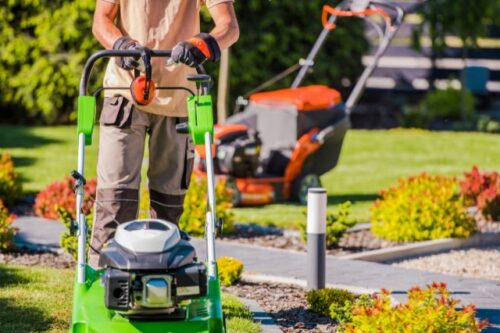Dogs come in a number of different shapes and sizes. Every breed has its unique quirks and tendencies. If you’re the owner of a larger dog, then you’ll have to contend with all of the problems that come with that extra mass – including the voracious appetite.
One complication that large breeds tend to suffer in later life involve the joints. Great Danes, Labrador Retrievers, Mastiffs and Alsations all tend to suffer in the same way: the joints of these dogs are expected to bear a great deal of weight. This causes accelerated wear-and-tear, which eventually manifests in osteoarthritis and other issues.
Understanding Joint Health in Large Breed Dogs
Joint problems tend to come in two forms. There’s arthritis, and there’s displasia of the hip or elbow. The first involves a breakdown in the tissues that surround the joint, which ultimately make it difficult for the joint to bear weight. The second involves the joint actually slipping out of alignment.
In both cases, prevention is better than cure. It’s better to assume that your dog is at risk, and to take steps to mitigate the risk, than it is to react to a problem once it’s become evident.
Diet and Nutrition for Joint Health
Certain nutrients play a key role in promoting good joint health. Glucosamine, Chondroitin, and omega-3 acids of the kind found in oily fish are all worthwhile. You can find these in supplements, or specialised wet foods. Look for foods formulated with older dogs in mind. Read the label!
Weight Management
What’s really important, however, is that the weight of the dog is kept under control – and that tends to mean calorie restriction. Don’t allow puppies to free feed, as this will cause them to develop habits that ultimately put them at risk in later life.
Select foods that are nutritionally dense, and that promote satiety. Use bowls of an appropriate size, and keep the portions limited.
Exercise and Physical Activity
Once a dog begins to suffer in later life, it might be reluctant to exercise. This can create a negative spiral of obesity and osteoarthritis. To avoid this, try low-impact exercises. Slow walking, and water-based activities, can be very helpful.
Orthopedic Beds and Comfortable Resting Spaces
Your dog needs a place to rest comfortably. Osteoarthritis can get in the way of this, causing pain that ultimately gets in the way of sleep, causes behavioural issues, and drives down the quality of your dog’s life.
Large dog beds ensure that osteoarthritic dogs have the space they need to find a comfortable position. In the case of larger breeds, this is obviously critical!
Regular Veterinary Check-Ups
By visiting your vet regularly, you can give yourself a good chance of spotting joint problems early. Be on the lookout for signs of joint pain in your dog. Do they avoid the stairs? Have they stopped jumping up onto the sofa? Are they generally lethargic, and grumpy when you try to fuss them? In every case, joint pain could easily be the culprit. Take action now!













